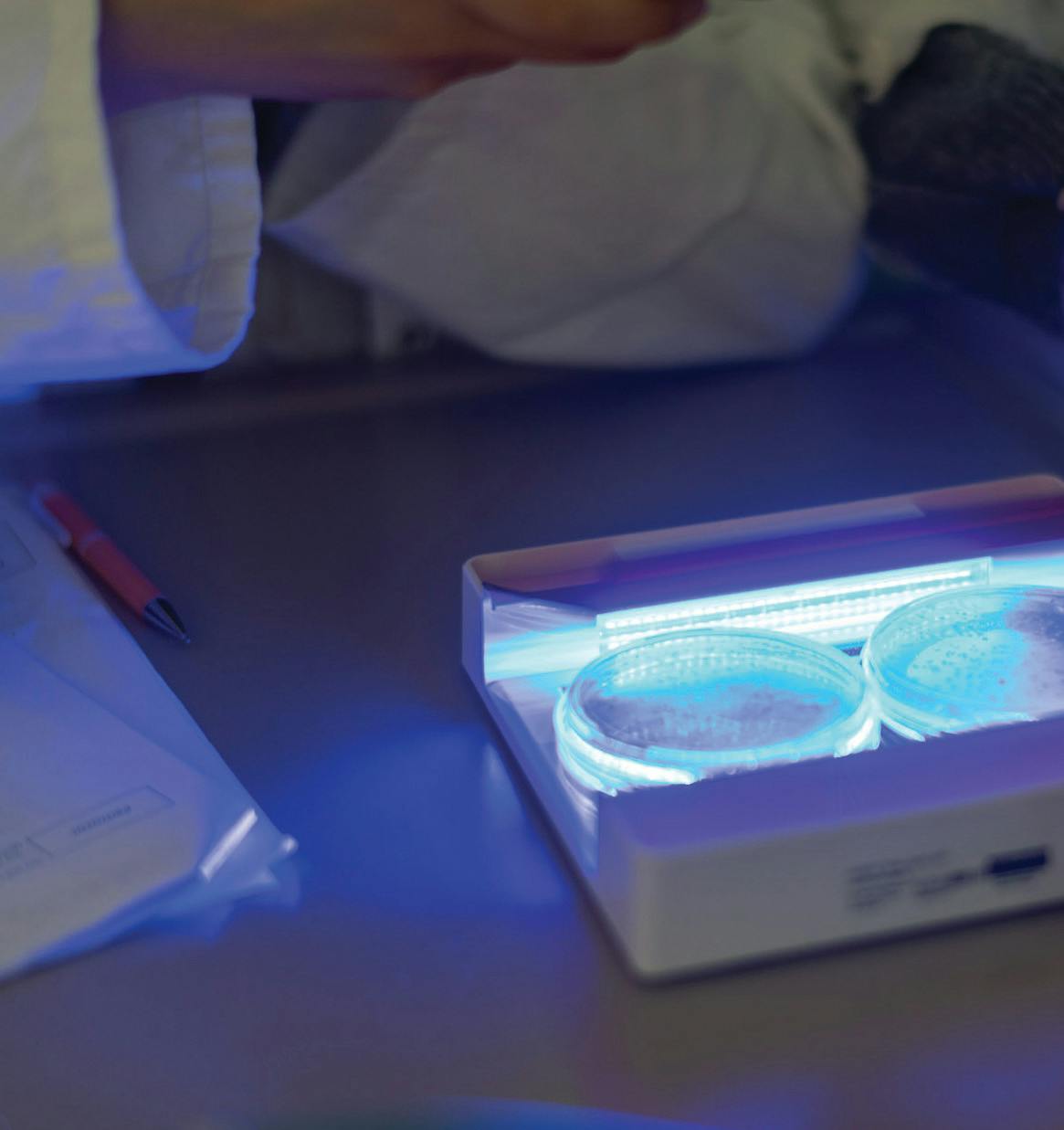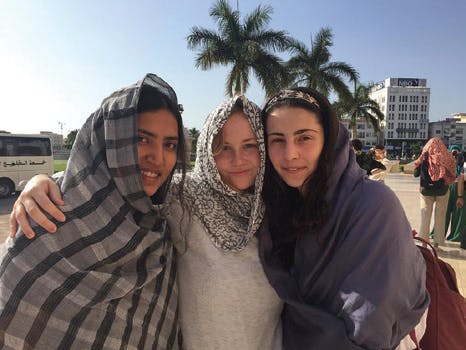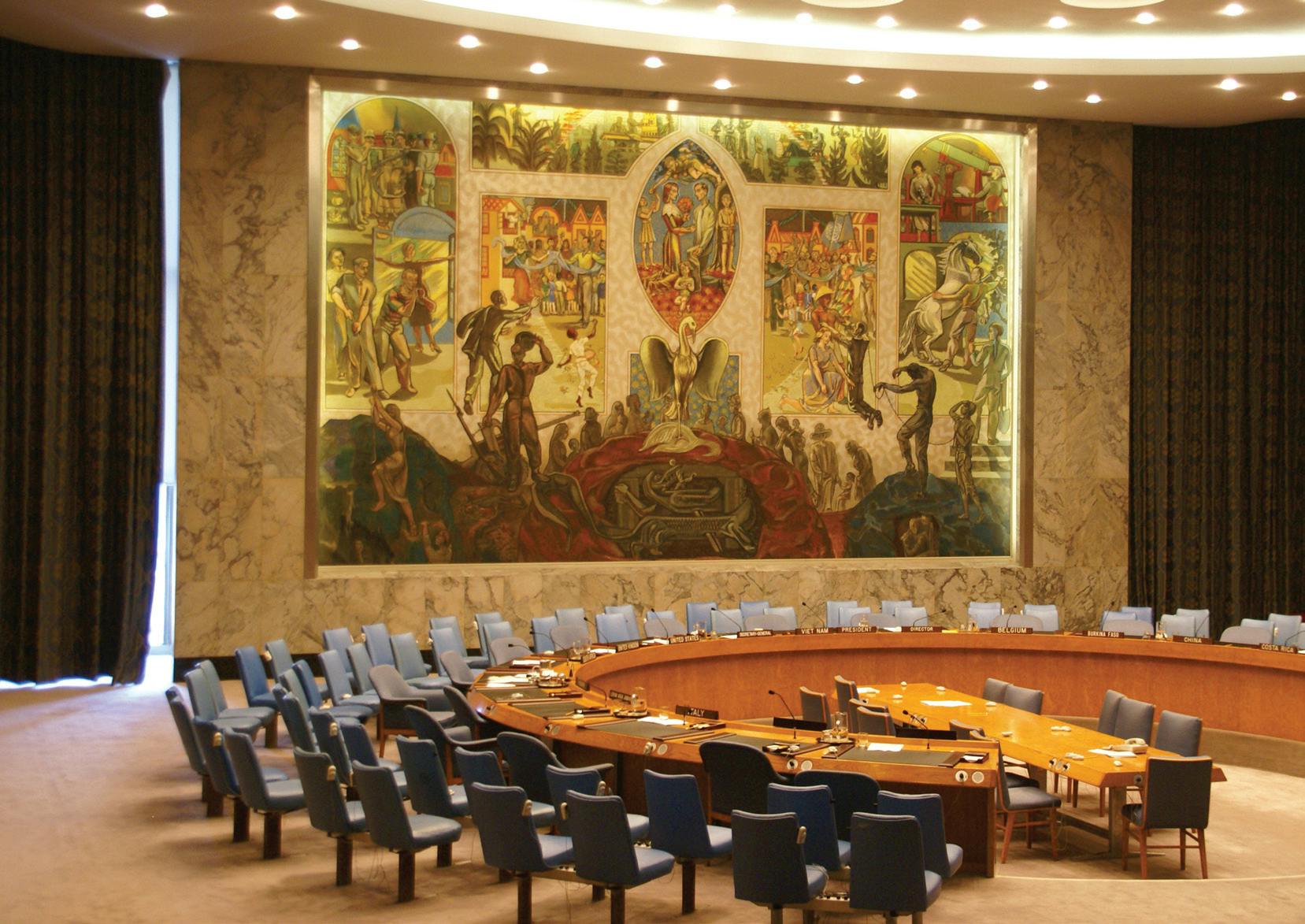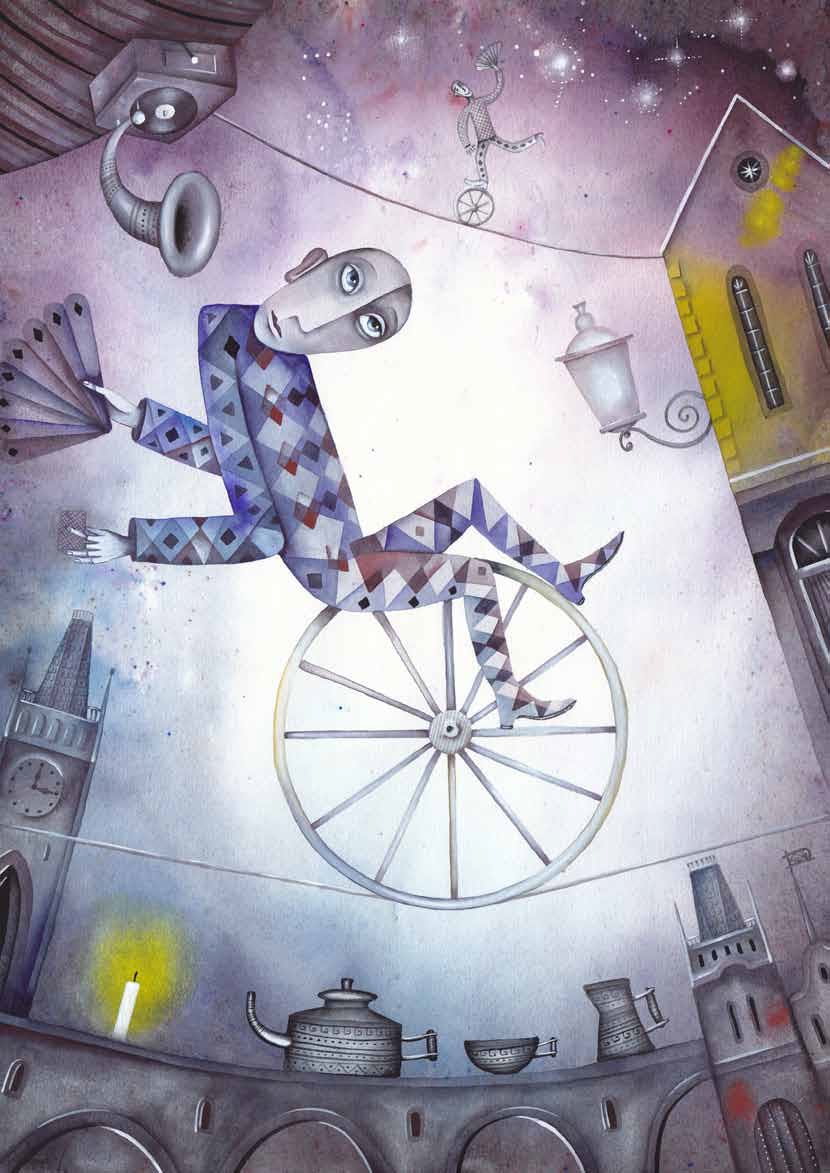
New Initiatives in Archaeology and Classics
St. Stephen's Summer 2018 Excavations At Ancient Gabii
QUONDAM TOGA GABIIS, GABIIS INSTRUMENTUM HODIE
The site offers countless possibilities for discovery. Gabii was an ancient city located to the east of Rome, near Tivoli, and was eventually conquered by the Romans in the late Republican times, but was always considered an exemplary city of high culture. A special way of wearing a Roman toga, exclusively used at special occasions and festivities, was recorded by the ancient historian Livy as the cinctus Gabinus, named after the town of Gabii.
Today, the site offers archaeologists a very rare possibility to excavate stratigraphic layers that range from the 8th century BC to the 5th century AD in one context, thus permitting a detailed study of urban development from the Iron Age until the fall of the Roman Empire.
Two current students Elena Che '19, Kiran Mcdonald '19 and alumnus James Hua '17, spent two weeks excavating the site alongside University of Michigan college students, like young archaeologists in training. Working long days in the sun to uncover new layers of imperial buildings with pickaxes, shovels and trowels, they discovered all sorts of finds like coins, pottery and bones. They also had an opportunity to process those finds in the various labs on site where they learned how to sort and draw pottery, identify animal bones and clean dirt searching for crop seeds to be studied under the microscope. Last year’s experience for our students was extremely successful, so stay tuned for more hands- on experiential and multidisciplinary learning as our students will be back at it again this summer.
I'd been scraping for at least two hours. The dust was really settling into my nostrils; stronger than the cement that lined a drain I would find. I couldn't really care at that point. 6 am's are not mything.
Scrape. Clink upon burdened clink, upon brown scratch. It gets rather nauseating, trying to excavate efficiently, but constantly impeded by--- clonk. At that moment, when the cicadas' mourning seemed to turn into a song of hope, when suddenly it seemed as if a god had smiled at me in my slumber of ignorance and 6 am, some flick from the deepest parts of my soul stirred.
Slowly I raised and revolved "it" around in my hands. I was whisked away by the fact that I was the first person in more than two millennia to touch the artefact, the first to weep over it, after it mayhave been buried naturally or by lovmg hands, unknown to us.
Yet there is a lot this unknown artefact can tell us. This discovery was merely a fraction of the life-changing lessons I learnt at the Gabii project on the methodology of classics and humanities, the interdisciplinary nature of classics, and most importantly the joy of archaeology.
That first find I scraped with my trowel meant more to me than probably anything hasever before in my life. It's notjust the wonder of finding the object and its beauty, but there's a sort of aura of glamour and glitz, of rustic simplicity and the perfect life you are invited to participate in, to live in.
And so wonderfulJy idiosyncratic to the Gabii project, I was able to get much more personal with my find. On the next day, I got to go to Finds lab and clean it very carefulJy. I then had the rare opportunity to analyze it in zooarchaeology.
The best part of the Gabii project is that their intense learning is both fun and practical. My first excavation session, where I was tossed into a trench without a clue of what I was doing, allowed me to practise skills, precisely as I learnt them, in situ, which gave me a deeper and more personal understanding of arc hae ology. In fact, I probably retained more in that first two-hour session than in anytwo-hour period ever! This ability to learn didactically gave me the rare opportunity to reflect on epistemological issues within archaeology and generally education: can our archaeological methods yield the truth? How valid are they? I formed my own opinion about the old "balance" between explaining evidence through previous examples and open-mindedly thinking of something new. The constant discovery of contradictory evidence, and new twists and turns, waslike an adventure that taught me that thelatter dominates: embodying the School's core values of risk-taking and open-mindedness, in archaeology it is vital that we keep an open mind when interpreting the evidence, carefully study the facts in the greatest detail, and be wary for new contradictions: thus simply livmg the archaeologist's eternal qualities.
And most importantly, it is this passion to learn which inspires everyone at the Gabii project to go beyond all expectations and share and debate their ideas and keep on improvmg. On my first day, myfellow beginner excavators who had been there for a week explained the basics. But once this was set, I relished the rare opportunity to discuss ideas about Gabii and archaeological methods with academics at the forefront of their field. It was a beautiful atmosphere of direct intellectual stimulation.
We also had sessions in zooarchaeology and archaeobotany (the study of bones and plant life respectively to understand human culture). They perfectly exemplified how archaeology and classics are becoming more and more important as interdisciplinary subjects, which is becoming all the rage todey. In zooarchaeology, we used biology to discuss the anatomy of animals and humans; we used mathematics and statistics to compare the bones in their locations and across different sites; we used our history and environmental skills by using this data on bones to reconstruct how the ancients ate, lived and died. In archaeobotany, we used our skills in chemistry when discussing the nature and composition of the charcoalized seeds, thinking under what conditions the seeds were charcoalized, and identifying the date using carbon-14 isotopic analysis. We improved our skills in biology when identifying the seeds under the microscope, but went further by distinguishing the effects inhabitants made on the seeds, and what this can tell us about how they cultivated over time and the advent ofrnass agriculture. This perfectly embodies the interdisciplinary nature of the classics, and how they can help us to answer some of the biggest questions todey-. These bring useful skills, especially critical and comparative, which are essential throughout life.
What I found (what I like to call personally from an Aeneid 11 passage that I adore, but for which I have no conclusive evidence) was the skull and jaw of an Iapygian horse. James Hua '17
I knew I had to excavate but I didn’t know how to use the tools. “Elena! Hurry up!”, the supervisor was getting mad but what was I supposed to do? “Come on Elena!” I took a deep breath and forced my brain to concentrate, only then did I notice the music playing in the background, it sounded familiar, it sounded like… my alarm clock.
Monday morning, I forced my eyes open, I checked the time: 5:50 am... late… as usual. I rushed to the sink while dressing up as a fast as I could. The only reason I was able get ready so quickly and arrive only 4 minutes late was because of my excitement in uncovering pieces of history, which have witnessed events that our modern society is aware of only through books and illustrations. I was honored to work for an important discovery project managed by the University of Michigan and with many university students with a remarkable knowledge of archaeology.
Once the bus arrived at the site I eagerly looked out the window. I expected it to be similar to that of my dream, instead it was situated on top of a grassy hill filled with scented flowers and buzzing bees: a beautiful view which enhanced the excitement bubbling in me. We were immediately set to work using trowels, pickaxes, shovels and buckets. As the day proceeded I realized that what we were essentially doing was moving dirt from one place to another in order to uncover artefacts something so simple and yet so tiring. At the end of the day we were drained, covered in dirt and sweat, I didn’t realize how awful my appearance was until I noticed everyone staring at me in the metro. Strangely enough, I wasn’t embarrassed, instead I felt accomplished, I had experienced something new and learned so many things in just one day, imagine in two weeks!
The next days were similar: waking up early but always late, rushing, reaching the site, working hard on what was hypothesized to be an ancient bath (since the walls were created by a waterproof substance), having refreshing breaks, drinking water, then cleaning up, taking public transport home, collapsing on the couch, and finally taking a shower. One could think “how boring, so repetitive” but I can assure you that it was not boring at all. We would rotate each day from excavating, to cleaning artefacts, categorizing pottery and even analyzing bones and ancient seeds under microscopes! Each day new discoveries were made, new artefacts were found (I found a bronze coin, two carved bone hairpins, painted plaster walls, an intact lamp, and so much more); all the work brought so much satisfaction.
I must admit that my favourite job was pickaxing. I was unsettled by the thought of it at first since the possibility of breaking something precious was a constant threat. However, my supervisor explained that pickaxing was essential to uncover a more significant quantity of information-- information that has been covered up for centuries under the dirt. I never would have thought that in archaeology destruction was the path to discovery. It is very ironic and yet it makes perfect sense to me now.
I learnt so much in only two weeks, my mind was opened to a whole new world, the ancient world of the people of Gabii. Participating in this project was a privilege and I wish to thank the University of Michigan’s field directors at Gabii, Anna Gallone and Marcello Mogetta, and St. Stephen’s Classics teachers, Ms. Van der Vorm and Ms. Weustink for allowing me this once in a lifetime experience I will never forget. Elena Che '19
Going into the archaeological excavations at Gabii, I really didn’t know what to expect. This is not to say I didn’t have expectations (my brain h concocted several out of hearsay and imagination), but I was sure they would likely be inaccurate, and I was in for a totally novel adventure. T suspicion turned out to be true, as I soon discovered that the archaeolo digging process involved much more dirt than I had thought. It was everywhere, and by the end of each day, I would be completely caked in a thin layer of silt. The Finds Lab (where objects from the field were processed) turned out to be 90% ceramics and we spent much more time sorting and washing pottery sherds (it is sherd, actually) than dealing with other materials.
Having said this, neither of these activities were bad or boring. While I may have been dusty, I was able to gain hands-on technical experience at the largest American-run excavation in the Mediterranean region - I learned how to use tools like trowels, brushes, pickaxes, and shovels, how to recognize stratigraphic units, and how to piece together hypotheses about the ancient peoples and buildings on site. While I may have been dealing almost exclusively with pottery, I learned how to identify many different types of pottery dating from the Archaic period to the Middle Ages, and how to recognize different ceramic and stone objects.
Neither digging, nor the Finds Lab was my favorite part of the Gabii project, however. My favourite part of the project was something that I had no expectations about because I barely knew it existed. It was the Environmental Lab, which was split into Zooarchaeology (the study of ancient bones), and Archaeobotany (the study of ancient plants and seeds). In the Lab, I learned how to identify different types of bones (both species and anatomical function) and seeds, how to collect plant- based matter from dirt, and about the myriad things seeds and bones could tell us about Gabii. I even held the bones of a 16-year-old boy! As a student who is deeply interested in the Classics and Biology (and looking to do a double major), this element of the excavation was particularly poignant, helpful, and deeply interesting. It shed light on how truly interdisciplinary and complex archaeology can be.
Being a part of the excavation at Gabii was an engaging, unique, and enriching experience. As a high school student, I never thought I would be able to have an opportunity like it, and indeed, many of the other participants were shocked to learn that we were as young as we were. Acquiring technical and theoretical archaeological knowledge, at a college level, was amazing, and it was made even better by the fact that our education at St. Stephen’s put us on a more-or-less equal ground with Archaeology and Classics majors in university. We were also always able to ask supervisors questions, which really helped us personalize and refine our learning. Overall, I think the project helped me grow immensely in terms of academics, and I thoroughly enjoyed my two weeks participating in it. I would strongly encourage other students to have this experience, as you might discover fields you never thought existed, passions you never knew you had, and you will certainly have fun! Kiran McDonald '19









